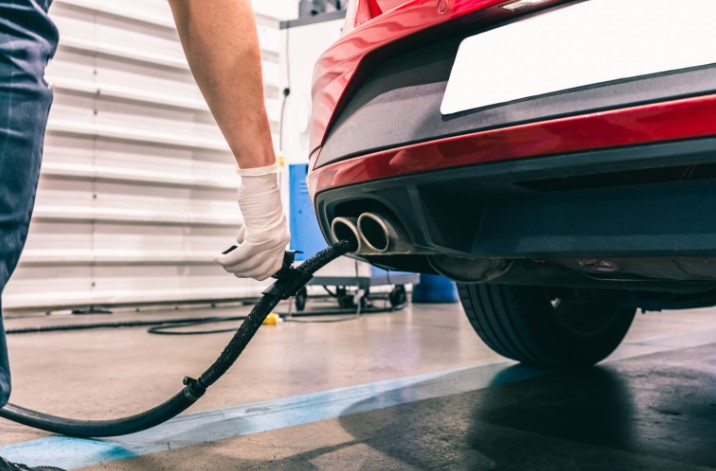How the Mercedes and Aston Martin F1 safety cars compare
For fans, the most obvious contrast has been the alternative green and red colours at the front of the field – but it’s been a different story for the F1 drivers themselves.
For the out-and-out performance of the two safety cars was thrust into the spotlight at the Australian Grand Prix when drivers took aim at the speed of the Aston Martin Vantage.
Frustrated that it was not lapping fast enough for them to keep heat in their tyres, Max Verstappen infamously labelled the green car a ‘turtle.’
“There’s so little grip and also the safety car was driving so slow, it was like a turtle. Unbelievable,” Verstappen fumed.
Those comments, allied to similar remarks from other drivers including Charles Leclerc and George Russell suggesting the Aston Martin safety car is five seconds per lap slower than the current Mercedes, prompted a swift response from the FIA.
The governing body made clear that the out-and-out performance of the different safety cars was not a criteria it was worried about. For it, the key thing was in the cars helping reduce danger for track officials and drivers in the event of an accident.
But while the FIA is satisfied with the performance of the Aston Martin, it is clear that drivers’ frustrations may not be so easily switched off – especially in races where getting heat into tyres for a restart is of critical importance.
So how do the Aston Martin and Mercedes safety cars compare on the technical front?

The 2022 Mercedes-AMG GT Black Series safety car leading the back in Jeddah
Photo by: Steve Etherington / Motorsport Images
Mercedes-AMG GT Black Series
For this year, Mercedes made a jump when it introduced all-new safety and medical cars – which are the most powerful versions there have ever been.
The Mercedes-AMG GT Black Series safety car is a slightly modified version of the track version of the production model.
Changes have been made for practical purposes – like the flashing lights (for aerodynamic reasons integrated into the car rather than as a bar on top), on-board cameras and a cup holder.
But on the technical front, it is pretty much as the track model. Powered by a 4.0-litre V8 twin-turbo, its aero, weight and centre of gravity were specially developed for the circuit rather than the roads.
It boasts 537kW (730hp), with some lightweight engineering and active aerodynamics that can change the profile of both the front splitter and the rear wing to reduce drag on the straights and deliver more downforce in the corners.
The track version of the car accelerates from 0-100km/h in 3.2 seconds, and boasts a top speed of 325km/h. (202mph)
Downforce figures estimate that at 200km/h it produces 249kg, while at 250km/h that goes up to 400kg.
F1’s safety car driver Bernd Maylander has certainly raved about it, admitting that he could not believe how much of a step-forward the 2022 safety car was over its predecessor.
“I’m simply blown away by how close it is to a thoroughbred race car,” he said. “It really is a major step compared to last year’s GT R – which was already at an extremely high level.”

The Aston Martin V8 Vantage safety car in Melbourne
Photo by: Carl Bingham / Motorsport Images
Aston Martin V8 Vantage
Aston Martin’s Vantage safety car is technically upgraded from the original road-going version of the sportscar – but has now been released as a bespoke F1 model.
The 4-litre turbo V8 pumps out 535PS (528hp) – which is 25PS more than the basic road going car. This gives it an acceleration figure of 0-60mph in 3.5 seconds
With an added front splitter and vaned grille, the Vantage creates 155.6kg of downforce at 200km/h, which is 60kg more than the production car creates at the same speed.
The safety car also features upgraded suspension, steering and dampers, as well as bracing modifications to help with front structural stiffness.
It features its flashing light panel in the more traditional position on top of the roof.
Safety Car Technical Comparison
| Tech Comparison | Mercedes-AMG GT Black Series | Aston Martin Vantage |
| Engine | 4-litre twin turbo V8 | 4-litre turbo V8 |
| Horsepower | 730hp | 528hp |
| Max Torque | 800nM | 685nM |
| Acceleration (0-62mph) | 3.2 seconds | 3.5 seconds |
| Top Speed | 202mph | 195mph |
| Weight (DIN) | 1520kg | 1570kg |
| Downforce at 125mph | 249kg | 155.6kg |
The Medical Cars
The medical cars of Mercedes and Aston Martin are also no slouches.
The Mercedes GT 63 S 4MATIC+, powered by a 4.0-litre V8 twin turbo produces 470 KW (639hp) and accelerates from 0 to 100km/h in 3.2 seconds. Its top speed is 315 km/h (195.7 mph)
The Aston Martin DBX Medical Car has a power output of 550PS (542hp), which launches it from 0 to 62mph (99.7 km/h) in 4.5 seconds. It has a top speed of 181mph.

Aston Martin DBX Medical Car
Photo by: Aston Martin

Mercedes‑AMG GT 63 S 4MATIC+ F1 Medical Car
Photo by: Daimler AG








